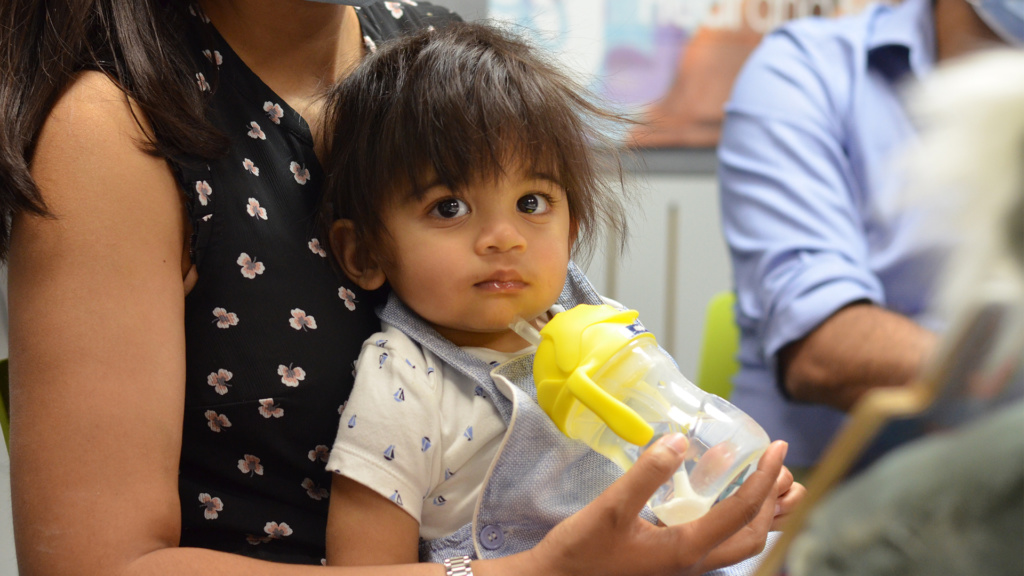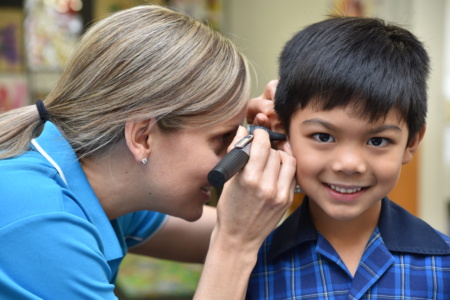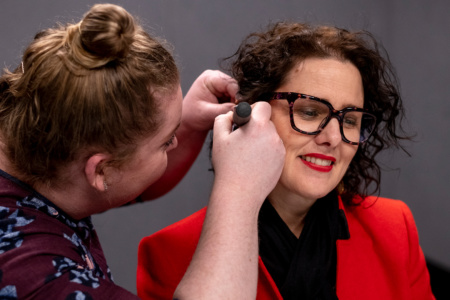Ear infections found in the middle ear are known as otitis media or ‘glue ear’, with research suggesting 75 per cent of children will have at least one bout by their third birthday.
Hear and Say’s Audiology team explain more about this common childhood infection, some of the signs to look out for and what can be done to resolve it.
How glue ear is caused
During a middle ear infection, fluid collects behind the ear drum. For some children, this will quickly clear itself. For others, especially those who are prone to more frequent middle ear infections, this fluid can continue to sit behind the eardrum for an extended period, ranging from a few weeks to several months.
Children have a significantly smaller and shorter inner canal – known as the eustachian tube – that connects the middle ear to the back of the throat. In children the eustachian tube also sits flat (unlike in adults where it’s longer and at an upward angle). For a child, these short, flat tubes allow easy access for germs like the common cold to travel from the throat up to the middle ear cavity and cause an infection – like glue ear!
Glue ear can significantly impact a child’s ability to hear clearly, and in some cases can cause a temporary hearing loss. If glue ear is left untreated, it can impact a child’s speech and language development, as well as their overall learning outcomes.


Signs of glue ear: what to look for
Even before recognising your child has an ear infection, you may notice some of these common symptoms:
- Fever
- Irritability
- Runny nose or sore throat
- Discharge (watery or thick fluid) from the ear canal
- Disrupted sleep
- Complaint of pressure or pain in the ear
- Poor balance
- Signs of hearing loss – for example, saying, “What?” frequently; turning the volume up on devices; trouble understanding what’s going on at home or in the classroom
Treatment for glue ear: what can be done
If you’re worried your child may have an ear infection, it’s important to first see your GP. They will provide advice about managing your child’s ear infection, and keep a record of the frequency of ear infections as needed. Not all ear infections need medication, and if your child is otherwise well no treatment may be required as glue ear can resolve naturally over time.
For children who suffer frequent ear infections, or for those where there are concerns regarding hearing or speech and language development, their hearing should be assessed by a qualified audiologist.
Where ongoing hearing loss and glue ear are found, a referral to an Ear, Nose and Throat (ENT) surgeon may be recommended. The most common treatment is a straightforward operation to insert small tubes (known as grommets) into the child’s ear drum, and the fluid is removed from the middle ear cavity. The grommets remain in place to allow drainage out of the ear canal in the event of any future glue ear. Following the surgery, your child’s hearing and speech and language development should be retested and frequently monitored for any changes.
If your child is experiencing glue ear or you have any other questions about hearing and ear health, Hear and Say is here to help – contact us now.
Sources and further reading:









